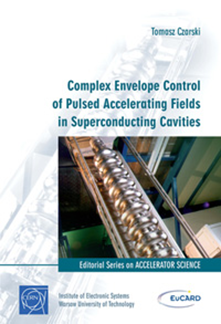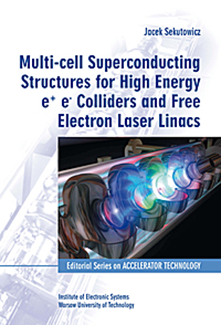Opis
Vol. VII, Editorial Series on Accelerator Science (R.S. Romaniuk, J.-P. Koutchouk, Editors)
Tom VII Serii Wydawniczej „Technika Akceleratorowa” (Regulacja obwiedni zespolonej impulsowego pola przyśpieszającego w nadprzewodzącym rezonatorze wnękowym)
The main objective of the CARE project was to generate a structured and integrated European area in the field of accelerator research and related R&D. The framework of CARE has successfully integrated the subjects, the infrastructures and the expertise. The volume consists of the following chapters: Overview of CARE Project; Electron Linear Accelerator Network in Europe (ELAN), Beams and European Neutrino Experiments (BENE); High-energy high-intensity hadron beams (HEHIB); R&D in SRF; Charge production with photo-injectors (PHIN); High-intensity pulsed photo-injector (HIPPI); Next European dipole (NED).
A digital control system for superconducting cavities of a linear accelerator is presented in this work. FPGA (Field Programmable Gate Arrays) based controller, managed by MATLAB, was developed to investigate a novel firmware implementation. The LLRF – Low Level Radio Frequency system for FLASH project in DESY is introduced. Essential modeling of a cavity resonator with signal and power analysis is considered as a key approach to the control methods. An electrical model is represented by the non-stationary state space equation for the complex envelope of the cavity voltage driven by the current generator and the beam loading. The electromechanical model of the superconducting cavity resonator including the Lorentz force detuning has been developed for a simulation purpose. The digital signal processing is proposed for the field vector detection. The field vector sum control is considered for multiple cavities driven by one klystron. An algebraic, complex domain model is proposed for the system analysis. The calibration procedure of a signal path is considered for a multi-channel control. Identification of the system parameters is carried out by the least squares method application. The FPGA based controller executes a procedure according to the following prearranged control tables: Feed-Forward, Set-Point and Gain. The control tables are determined for the required cavity performance, according to the recognized process. Nonlinearities and deterministic disturbances are compensated by the feed-forward table for the open loop operation. The closed loop correction for the feed-back mode is performed by the complex gain of the corrector table. The adaptive control algorithm is applied for the feed-forward and feedback modes according to the recognized process. The presented method is useful for the repetitive, deterministic condition. It has been verified experimentally in the case of a pulsed mode of an accelerator operation. Experimental results, based on the field measurement, are presented for a cavity representative operation. The results of the project accomplishment can be presented and used physically by driving the real cavity module according to the given control algorithm.
Wydanie: 1, 2010
Format: B5
Stron: 162
ISBN 978-83-7207-828-5
320/2009




